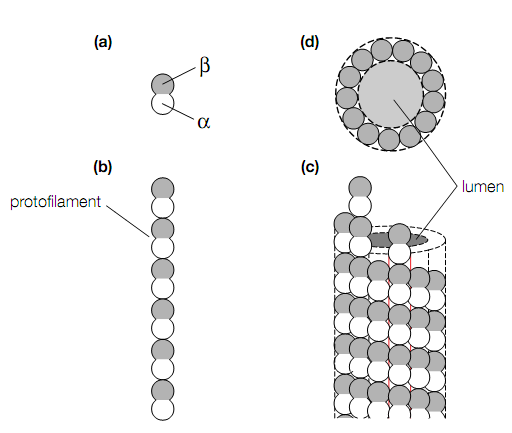Molecular motors
Numerous accessory proteins attached with the cytoskeleton, including the motor proteins or molecular motors. These proteins bind to a cytoskeletal filament and utilized the energy which derived from repeated cycles of ATP hydrolysis to move along it; therefore they convert chemical energy into motion. In eukaryotic cells there are various types

The structure of a microtubule (a) Tubulin consists of a- and b-subunits. (b) tubulin protofilament consisting of various adjacent subunits. (c) The microtubule is formed in parallel from 13 protofilaments aligned. (d) Cross-section of the hollow microtubule.
of motor proteins that differ in the type of fiament to which they bind and the direction in which they move along the filament and the cargo they carry. The motor proteins linked with the filaments through motor domain or a head region that binds and hydrolyzes ATP, whereas the tail region binds the cargo that is transported. There are 3 types of motor proteins: the kinesins and dyneins that bind to microtubules and the myosins that bind to actin filaments.